
Here’s a road that’s almost never raced yet memorable for thousands of European cyclists, from amateurs to the best on Team Sky or Quick Step. Mallorca’s Sa Calobra is a road to ride in both directions and an experience notable for the roads, challenge and views alike.
The Route
The MA-2141 starts in the fishing village of Sa Calobra and climbs for 9.9km at an average gradient of 7.1% to the Coll dels Reis. There is no mistaking the road because, unless you arrived in Sa Calobra by boat, it is the only road in and out of the village.
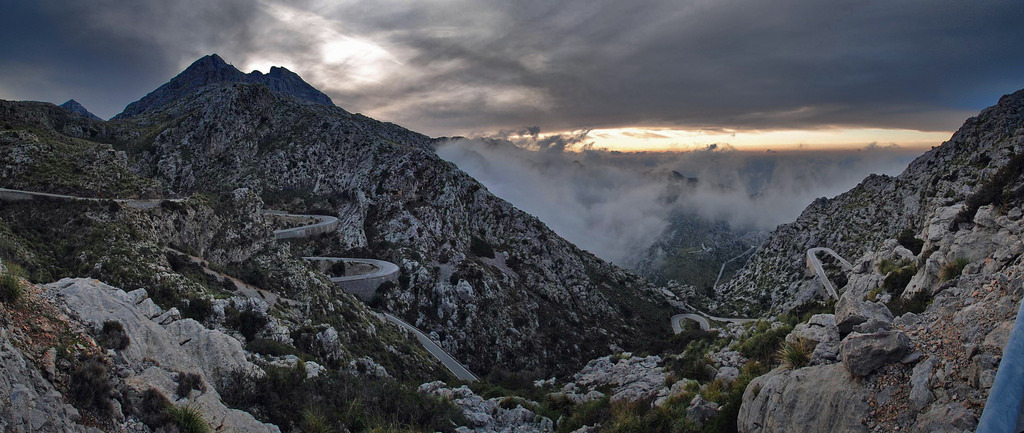
The Feel*
Sa Calobra is a descent before it is a climb. This is literally so, as you must go down before you go up but it’s also true in spirit. The road is visually spectacular, especially looking down. It offers some amazing views: that first view of the 270 degree hairpin near the top; then the almost endless series of hairpins winding below you; then the views of the sea. You glimpse the sea first in the distance and several hairpins later it’s still surprisingly far below until suddenly the sea is right there and there’s no more road.
The Sa Calobra road turns off from the Pollensa to Soller route, the Ma-10; to get to the turn you’ll have climbed at least 650m, and traversed high along the north side of the Tramuntana range. Turn off to Sa Calobra and it’s another little climb that greets you first; and the climb is a welcome relief—not for the climbing, but because it’s the first south-facing slope you’ll have been on for an hour. You bake pleasantly on the exposed face before tipping over the Col dels Reis to start the famous descent.
The road is an engineering achievement against the odds, down a mountainside with no natural route down; the descent is technical but fast, with no two hairpins the same and some with steep inside lines. The 270 degree hairpin near the top is the highlight visually, but is less special to experience on two wheels: you go from having a rock-face on your right to being exposed on both sides, and the gusty winds can be unnerving as you cross the bridge you’ll pass under in a few seconds.
It’s quiet in February, there are more cyclists than vehicles. On a day in late February there were three cars and a coach to overtake on the way down.
Once at the bottom you face a three-way choice: go straight back up, have a coffee or eat lunch. My preference is for the first or second; there’s too much climbing to come to have a full stomach, but you’ll need an energy bar or banana before you’re home. The climb out of Sa Calobra is 9.9km at 7.1% average; there are plenty of 8-9% sections and one or two 10% ramps about half way up (which you can see coming above you as you climb a couple of hairpins below), and the steepest section comes near the top—immediately after the 270 degree hairpin—at 11-12%.
For most riders, 39×27 is enough, but 36×27 preferable, and most riders who can climb at 10km/h indefinitely in the Alps will find that they can keep this speed up no problem for an hour on this steeper climb. That gets you up in just under an hour; a good time is somewhere in the 40min+ range; the record is claimed by Team Sky’s Richie Porte with 23.59 according to Daniel Friebe in Mountain Higher. He used 39×27.
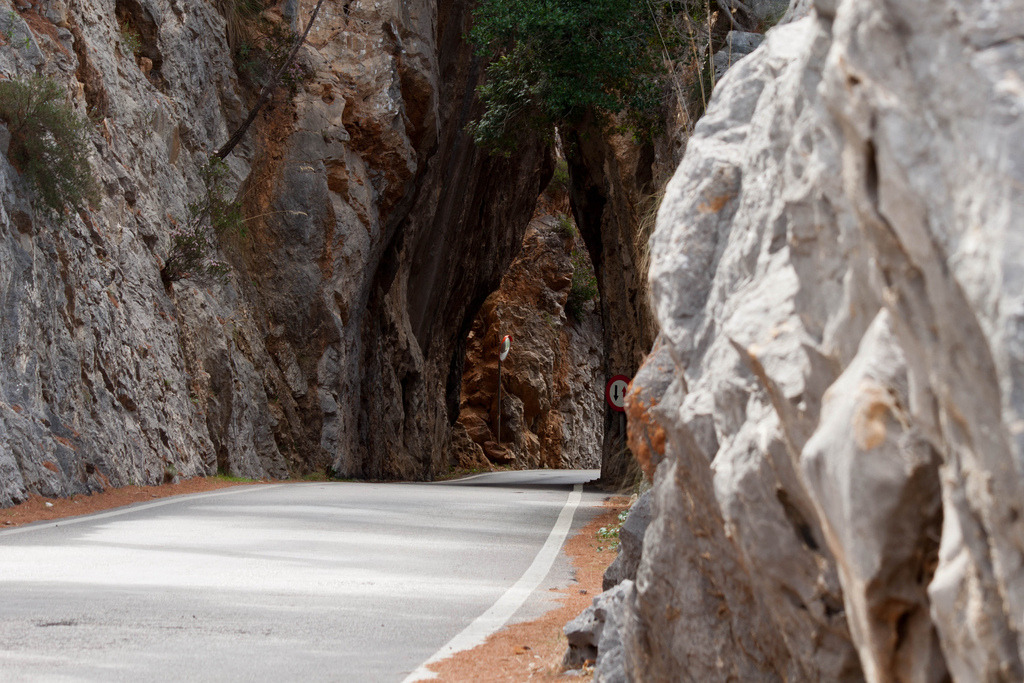
It’s worth looking up and looking around as you climb, to see the sights you missed on the way down through concentration and speed. Near the bottom is the overhanging cliff that looks like it will graze the roofs of the coaches; then comes the narrow gorge that sees two cliffs almost touch above your head as you cycle through.
You might want to stop on the corner immediately after that gorge for your last really good look at the sea. After that the views are of the cliffs above you, and of Puig Major (Mallorca’s highest peak at 1447m), which towers over you with the winter sun just above it. As you climb, you always have a good view of the road above you to come, except at the end: the 270 degree hairpin marks a change in the run of the road that hides the top, and the last kilometre comes as a surprise. Save a little juice for that last ramp above the 270 degree hairpin, and save some more for the ride home: at the very least (if you turn left to Pollensa or Selva) you’ve 150m of climbing still to do on the ridge; turning right to Soller means you’ve more like 300m still to go up. That’s perhaps the difficulty of the climb: the fact that the climb lies a good way from wherever you’re staying in Mallorca. You have to do at least one good climb to get over the Tramuntana ridge to reach the start of the descent of Sa Calobra, and when you hit the top of Sa Calobra, you still feel like you’re a good way from home. As one of our clients said this week: “I have never ridden such a wonderful road, but I’m so glad to be back at the villa now.”
Mallorca?
It’s a Spanish island in the Mediterranean which also goes by the name of Majorca. Look at the map below and it’s the larger of the three islands east of the mainland.
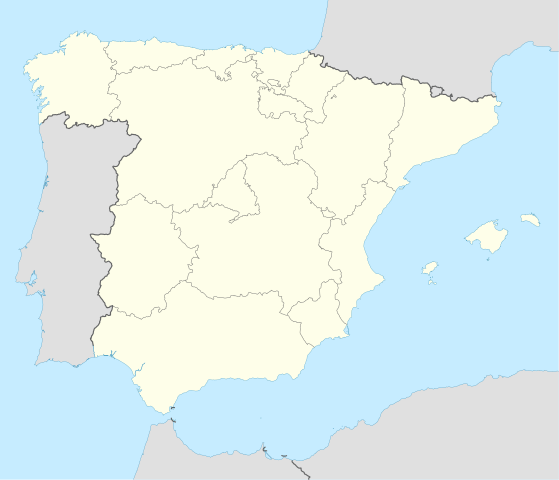
Race and ride
The island is host the Trofeo Mallorca races in February, 1.1 on the UCI calendar. They’re a series of one day races with an overall prize. This means riders can start just one or all four races and typically most mix and match to suit their form and objectives. You can see U-23 hope Dylan Groenewegen (Cycling Team De Rijke-Shanks) celebrate a win in one round earlier this year… but it was Sacha Modolo (Lampre-Merida) who pipped him on the line.
 For amateurs there’s the Mallorca 312 which is a ride around the entire island that is, talk about nominal determination, 312km long. The 2014 edition has just finished leaving you plenty of time to plan for next year’s edition.
For amateurs there’s the Mallorca 312 which is a ride around the entire island that is, talk about nominal determination, 312km long. The 2014 edition has just finished leaving you plenty of time to plan for next year’s edition.
When To Go*
April and August are incomparable. Daniel Friebe writes in Mountain Higher:
In high season Sa Calobra the resort is a sow’s ear contrived out of a silk purse. The tiny bay becomes a bottleneck, corked and shut off from the cyan waters by a thick bung of sunseekers.
The Rough Guide to Majorca calls it “an over-visited disaster” but all this relates to the summer season when the island is one of Europe’s largest tourist draws.
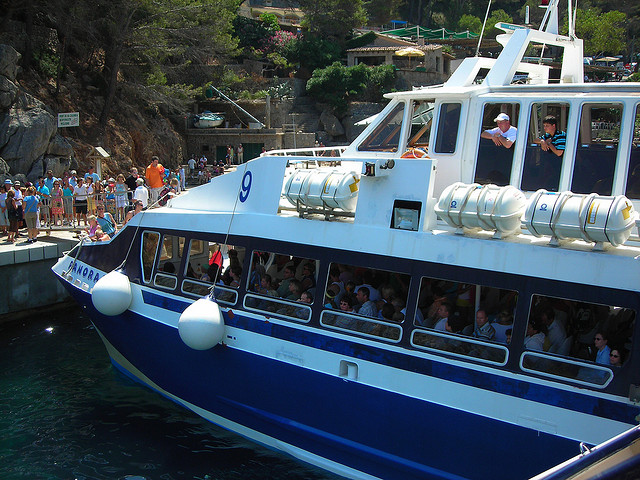
But all those villas, hotels and more need business outside of the summer and there are two secondary markets. First the “grey market” of senior citizens who visit all year round for the mild climate and low season prices and second the cyclists who come to enjoy the quiet roads, climbs and climate. It’s a great place to try in the late autumn but the number of riders picks up from January as Germans, Brits, Danes and others escape grim weather at home and rack up miles as well click-clack their cleats around coffee shops. The main tourist season has its peak in July and August with June and September being busier.
From mid-Feb the restaurants in Sa Calobra are open, so there will be the odd car and coach going down—these have a tricky drive, and will be going much slower than the average cyclist. By April the road is growing busier, and by May-June Sa Calobra is perhaps too busy to be any fun to ride, unless you get up very early in the morning. Whenever you are on the island, try to find a time when you’ll have it quiet. In February you can drop down for midday but for each month later aim to leave be there an hour earlier to have quiet and fast roads for the descent.
Access
A tourist hub, Mallorca’s Palma airport is well served by connections all over Europe and the baggage handlers probably carry throw more bike bags and boxes than anyone else. You can take a ferry there from Barcelona and Valencia on the Spanish mainland.
Palma is the capital but cyclists tend to head beyond to Port de Pollença and Alcudia with the Serra de Tramuntana within range. From here it’s not far to Sa Calobra.
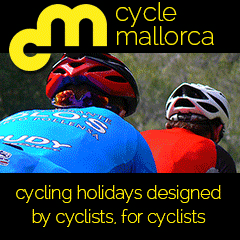 * Note: “The Feel” and the second paragraph of “When to Go” was written by the people at Cycle Mallorca who have been a sponsor of The Inner Ring. I’ve ridden down and up but it was ten years ago so and decided to ask for some local help
* Note: “The Feel” and the second paragraph of “When to Go” was written by the people at Cycle Mallorca who have been a sponsor of The Inner Ring. I’ve ridden down and up but it was ten years ago so and decided to ask for some local help
Photo credits: Main image by Flickr’s luscofusco , 270 degree bend by weebseeings, stone arch by robert steinhoefel, boat landing by jacoboportillo
More Roads to Ride can be found at inrng.com/roads

Looks like a great road to ride. Perhaps you should do one on Teide as well, it ‘s another favorite training road on a Spanish island.
Interesting that you say most people should use the same (or just a tiny bit lower) gear as Richie Porte going full gas? I don’t think he was going that fast on that gear though, he’d have been spinning like a track sprinter at 140 rpm. On the other hand 10 km/h requires a 1:1 gear at a more reasonable 80 rpm so 36-27 would be a bit heavy.
Generally and theoretically, the less watts you’ve got in your legs (and heart and so…), the lower your ideal cadence.
A 70kg person riding a 7kg bicycle at an average speed of 10km/h on this climb is averaging about 160-17oW, which corresponds (following the distinguished Dr. Ferrari 🙂 ) to an ideal cadence of 60-62 rpm. With a 36×27 you ride at 10,1 km/h with a 60 rpm cadence. In this sense, the article is not totally accurate, maybe, but quite so. Even if… it’s not considering the changing gradient that this climb shows, which may prove an important factor, as we’ll see in Porte’s case.
In the case of Porte, I don’t know if he was on his summer or winter weight, but I’d say that he was performing more or less between 410 and 440W, which would imply an ideal cadence about 95 rpm, which would generally correspond to a 39×19, given his average speed.
We may assume that Team Sky prefers to stress high cadence training, but even so, just as AK says, I can’t figure Porte effectively spinning a 39×27 at such a speed all the way up.
So what? Well, just using his gross VAM (without recurring to watts, which would be more precise, but not in our case, id est, in absence of accurate data), we can say that he was probably climbing the steeper sections at 17-19 km/h: with a 39×27 that means a perfect – for him – cadence of 92-102 rpm.
Therefore – as it was quite obvious, indeed – 39×27 was simply *the lightest gear* Porte was using. The climb has some significant changes in gradient, thus it’s unlikely that the speed or the gear were constant.
When comparing the two very different situations (pro going to make a top time vs. amateur climbing for the “made it” sake), other factors that should be considered are, for example, the fact that less trained people struggle to manage good cadences, and that when you’re not climbing for a record but just to arrive on the top the power output varies a lot, saving energies in the easier sections and pushing harder in the steep ones… and so on…
I don’t want to go too far off topic here, but your analysis is interesting. Do you have links to any good papers on what determines ideal cadence. I work at a university so I have access to more than just the open source stuff. I’ve looked for it briefly before but didn’t really find good answers. As often in sports science most of the research has small group sizes, very few repetitions and not enough systematic variations of all the relevant variables so the conclusions are often poorly supported. I don’t own a power meter but I generally find that I prefer higher cadence for harder efforts, especially when I’m doing a long ride and already tired.
As I said, I got this ideas from some old posts by the *nefarious Ferrari* on his website. Even if the material is quite old (and referring to even older references in terms of academic research, going back to 1985 or so), the good doctor is still quoting it in his more recent comments in the forum, so I guess he’s sticking to those concepts.
Just as you observed, scientific research in the field is often unsatisfactory, hence I consider that a pragmatic approach based on huge expertise (the chance to analyze literally thousands of people, athletes or not, under many different circumstances, while being at the same time focused on a specific sport) may prove very indicative of a general perspective, that should subsequently be adapted to every specific person.
I find it very interesting also because Dr. Ferrari was one of the prophets of the revolution of high cadence (the posts I’m hinting at were written during 2003), so I imagine he was looking quite deeply into the problem when working with his clients.
You can easily find the related notes in Ferrari’s website, in the article/training section.
Sadly, I think it’s not what you’re looking for, they’re way to short and simplistic for a person with academic background (I work at university, too 🙂 ). Ferrari is showing off his knowledge, but he sure won’t be giving away all the data he may have collected, nor revealing the methodology… Still, it’s interesting because of the “samples” he could examine along all these years. Further investigation would be greatly welcome.
Thanks. I haven’t looked in to any of Ferrari’s writing but the lengths people went to in order to make use of his services makes it plausible he was as factually right as he was morally wrong.
I have to correct my own last post. Looking at what he says about weight and climbing, the guy obviously does not understand physics. Not that I understand why the weighted climber was so much slower at low power in this example http://53×12.com/do/show?page=article&id=98 but the explanation he gives is clearly wrong. If gravity is the only force that counts, velocity fluctuations are equal. If wind drag is a factor they’re even smaller. Furthermore the only power lost by velocity fluctuations is due to wind drag, the inertia terms cancel out, so the slower rider is more efficient. There are biomechanical disadvantages to large variations in speed but they wouldn’t show up in this test as it is done at constant power.
Maybe he knows his physiology and pharmacology, but when it comes to physics he clearly isn’t worth the big bucks we know he received.
Generally speaking, I find Ferrari’s reflections stronger from an empirical point of view (interesting “experiments”, collection of data, expertise, intuition), while they come quite short when you want to get to theory and causal explanations. I think that’s ok for him, he sees himself as an artist and stresses the unique and individual aspect of every case. Personally, I’d like to see more theoretical depth, still it’s important to hold both perspectives. You feel he is (or was) more of a medical doctor than a biologist or a physicist, he works with the singularity of the patient/athlete more than with general rules.
I don’t share his background, so I’d have different curiosities; still, his suggestions (the public and legal ones, at least 🙂 ) often prove themselves useful or thought-provoking.
That said, I suspect (even if I’m far from sure) you got someway wrong what he wrote in the article you linked.
Look at the gears. Ferrari refers to the pedaling “dead spot”: the problem, in his opinion, is that the weighted cyclist rides more slowly (quite obviously, being the power output and the climb the same)… with the same gear. That means less rpm, and thus – normally – greater influence of the “dead spot”, that is, more microfluctuations of speed.
He is not saying that the weighted cyclist has “greater deceleration” and “costly acceleration” …because of… his mass is greater (that would be wrong, since, as you noted, inertia cancels out), but [quote] “because of the longer dead spot” (which is due to lower cadence, which depends on lower speed without corresponding change of gear).
Maybe the title of the article is misleading, and its writing is not articulate; I guess Ferrari decided to try and see what happened but had no idea about creating an appropriate experiment to set independent variables and so.
However, IMHO his apparent conclusion doesn’t go against the principle of physics: not because you’re wrong (you aren’t) but because he’s not saying what you say 😛
All in all, we’ve got a good example of what I think about Ferrari… here is the data, he spends nothing more than a couple of lines to try and explain it.
Nevertheless we may be intrigued, and thus incited to figure out some kind of different or better explanation.
Just as you say, I’ve not an hint about that, but, to start with, I observe that the faster the speed, the closer the cadence is to the ideal one for the corresponding power. Should we infer that a globally more efficient system copes better with extra weight? No idea. Maybe it’s just a matter of relative difference:
Rpm of weighted cyclist = 54 (71% of ideal cadence) – 63 (79%) – 67 (79%) – 75 (83%)
Ideal cadence = 76 – 80- 85 – 90
Rpm of n-w. cyclist = 61 (80%) – 69 (86%)- 72 (85%)- 80 (89%)
Difference between % = 9 points (11,25% of top percentage), 7 pts. (8,1% of t. p.), 6 pts. (7% of t. p.), 6 pts. (6,7% of t. p.).
Difference in speed and VAM recorded by Ferrari = -11.1%, -8.6%, -6.7%, -6.0%.
Far from science, but quite interesting.
I won’t go any further, otherwise I’ll kill out of boredom many readers, and inrng will properly ban me 🙂
The velocity fluctuations don’t matter, that was my point. But this is certainly getting out of hand, maybe we can continue this via other channels. My Gmail address is @ll@rdk@t@n, replacing @ with a.
Nice write up. Will be there next weekend with my 36/27 (probably wishing I had a 36/29!).
I’m reasonably fit, with a >300 FTP and wt about 160 lbs, and I can’t imagine doing stiff climbs without a 34/28. Why kill your knees?
Said that there are many ways to kill your knees, and superhigh cadences are among those, one reason to choose an “heavier” gear may be to stick to your ideal, best performing cadence (all very theoretical, it changes from person to person, obviously).
You’d be climbing here in about 35′, and probably your best “average” gear (a concept that makes little sense, but it’s just to have an idea or to compare with Porte’s “average” 39×19) would be a 34×20 at 17km/h and 78 rpm.
Anyhow, note that you’re right… that is, in the steeper parts of Sa Calobra a 34×28 would be perfect for you to maintain your best cadence (well, with the suggested 36×27 you’d be *falling* to 70 rpm… no tragedy, IMHO 🙂 ). Just as in the easier parts you’d be spinning comfortably a 34×17.
Thanks. Interesting analysis and I think you’re spot on. I have spent a (long, cold) winter staring at my watts, cadence and HR and playing around with “efficiency”.
Beautiful.
Riccò could beat 23 minutes…
If you consider how much better was Riccò than Porte, I’d dare to say that he would even get close to 22’…! 😉
With the police chasing him on motorcycle even faster!
Down and up, up and down, it would made a funny silent movie style gag (or even better, a Benny Hill’s running gag with Yakety sax and all) 😛
I appreciate the high season comments but has anyone ridden this climb (and area) in July? Is it really that bad? Hot obviously but are the roads jammed up with idiot rental car tourists etc?
You just have to get up early, very early to enjoy the descent.
I rode it mid July last year. I hardly saw any traffic since I started going up the climb around 8:30. I was staying in the Pollensa area so this required an early start. It was very hot too.
I also rode it late September, but we didn’t get there until nearer lunchtime. There were lots of coaches to overtake on the way down. But the temperature was far better.
According to my friend who visited in June (not for cycling), it’s basically un-rideable. It’s not even safe with the crazy driving of the locals unless u r in a big group.
Did it late August / start of September. Was fine as long as you do it early. We left Puerto Pollensa at daybreak (7am if I remember right) and had the valley to ourselves on the descent. The tour buses were just starting to come down as we worked our way back to the top.
I leave for Mallorca next week, really looking forward to riding this road, hopefully its not too busy!
Another way to avoid traffic is to do it as a night ride. Rode it that way the first time I visited Mallorca, leaving Puerto Pollensa early evening to arrive at the bottom at dusk to climb back out in darkness.
The descent back down to Pollensa afterwards was pretty sweet, with a string of tail lights stretched out down the road.
Not a road I enjoy as it’s basically straight up and down (as is San Salvador) and yes it’s stupidly busy at times with tourist buses so early or late is the best time to do it. I can see the challenge of the climb and it does get hot in summer as you are climbing out of a valley that’s a suntrap. But Mallorca has a lot of quality riding for its size and a culture that knows how valuable those 100,000+ riders are to the economy.
http://gpm10.com/blog/
Another great view of the climb here
Aren’t coaches banned from the road between 1pm and 3pm (or very similar)? Doesn’t save you from the hire car drivers tho’, many of whom are British and struggle with the width of their cars and, for them, driving on the ‘wrong’ side of the road. Or the sun.
All in all, if you can get it quiet, it’s a good climb. Nicely graded.
Looks like be staying nearer Palma in July anyway so may not get a chance to ride this area. I’m sure I’ll find something though!
Hi Inrng
Really love the website which just started to read coincidentally a couple of weeks before riding Sa Calobra. It truly is an awesome climb. Its not long, and as one of those who grind up the alpes at 10k per hour, it is not that difficult to climb. But because you can see so damn much of the climb when looking down from the top, it just looks awesome. And it has many aspects. Some stretches feel like the gentle wooded Pyrenees, but in the middle is a windy stretch reminiscent of the Stelvio/Alpe d’Huez. I think your estimation of an hour for the climb is a bit generous though. I have the VO2 of a small squirrel, but still managed the climb in around 50 mins taking it pretty steady.
replying to myself! On reflection squirrels probably have amazing VO2 max… perhaps a Galapagos tortoise may be a better analogy.
Ridden this many a time. During the midday hell in high summer – kamikaze descent overtaking coaches, my partner wasn’t happy when I told her we’d had a 3 up race downhill. Best time is early in morning pre 10am or at end of day post 5pm (warmer). The cooler air is better if you sweat like me, but by the time you’ve ridden from Pollenca you should be used to it. Don’t forget the other little side road off to the left half way down heads to Cala Tuent….much quieter great swimming to cool off and another gruelling climb. Enjoy, Majorca rocks.